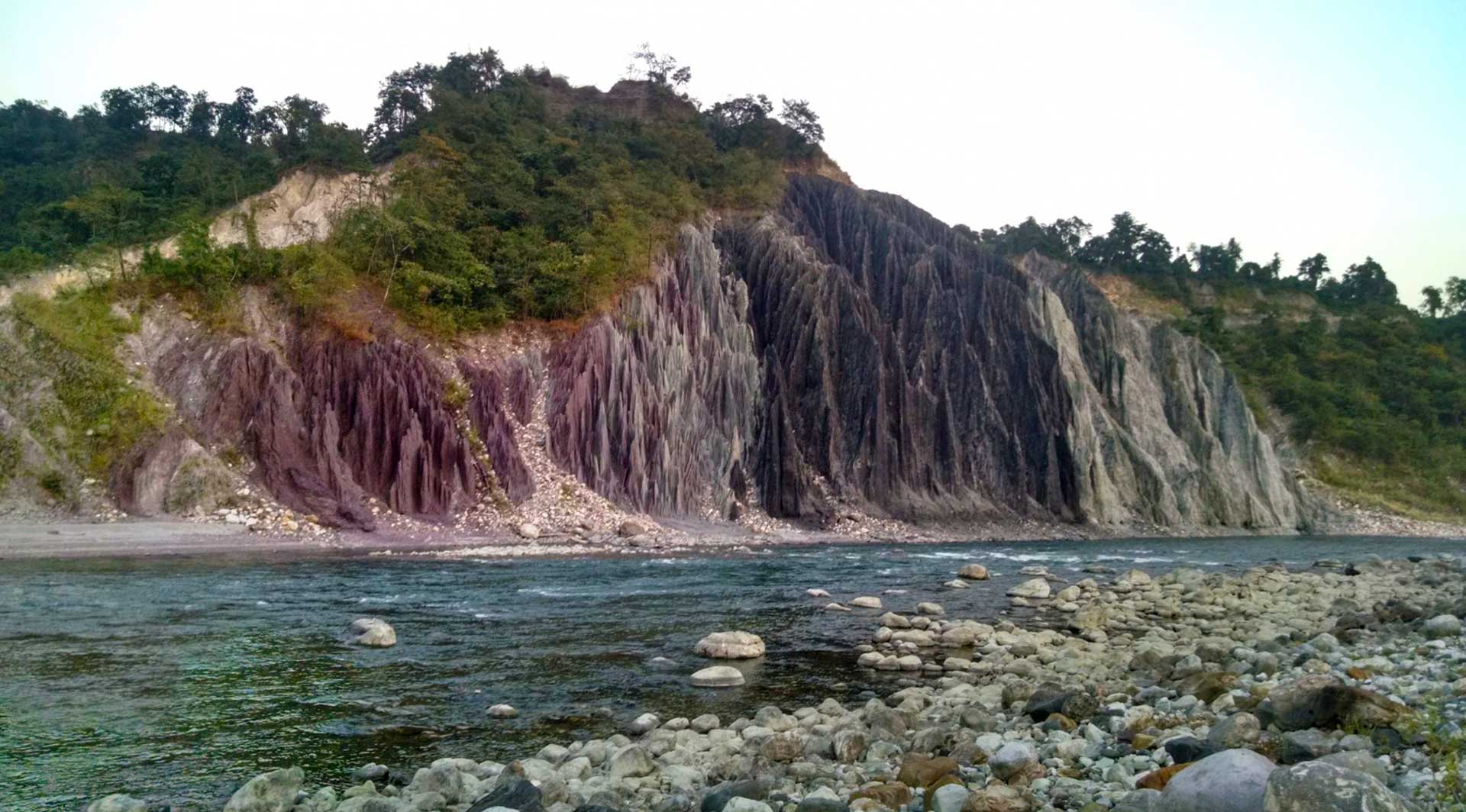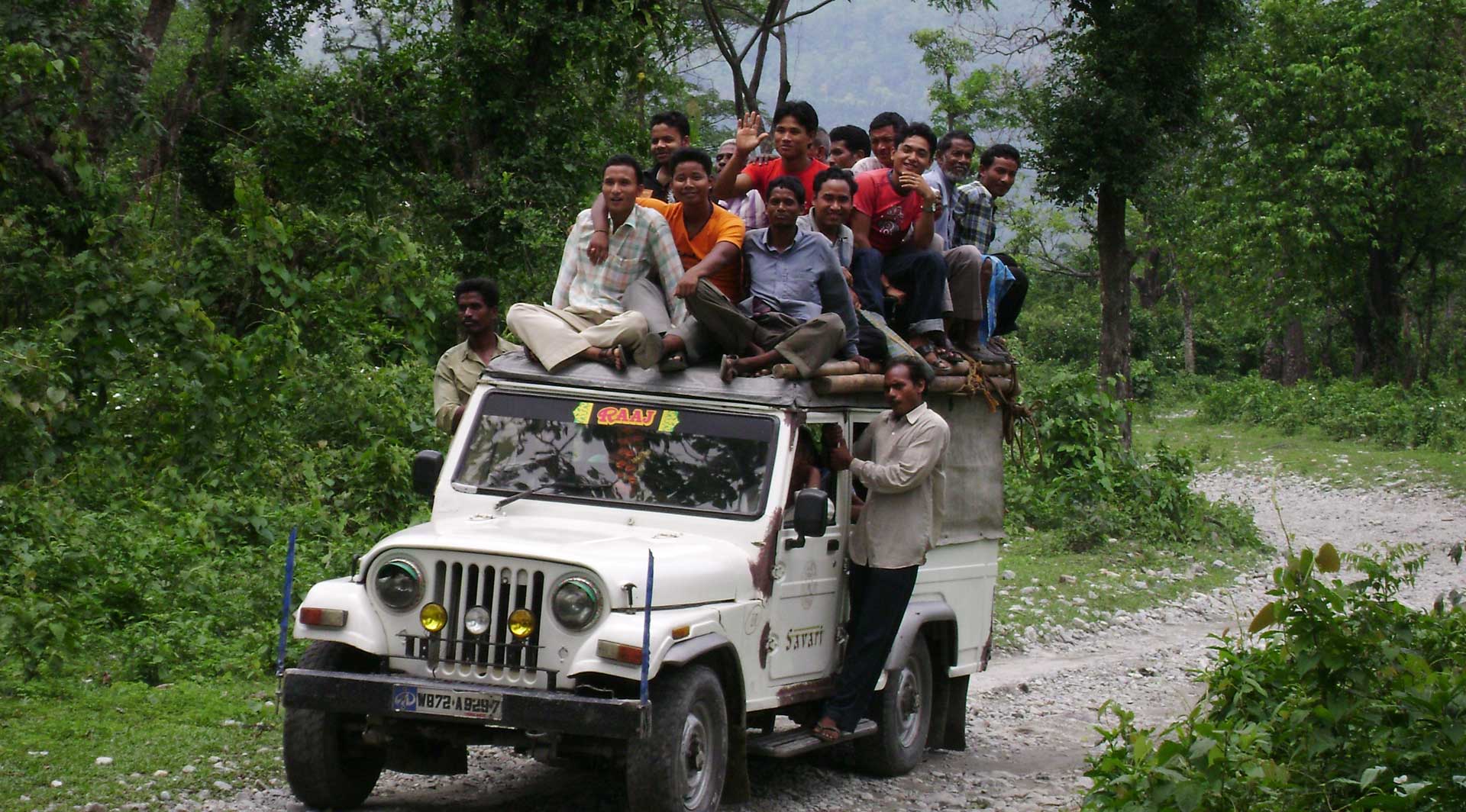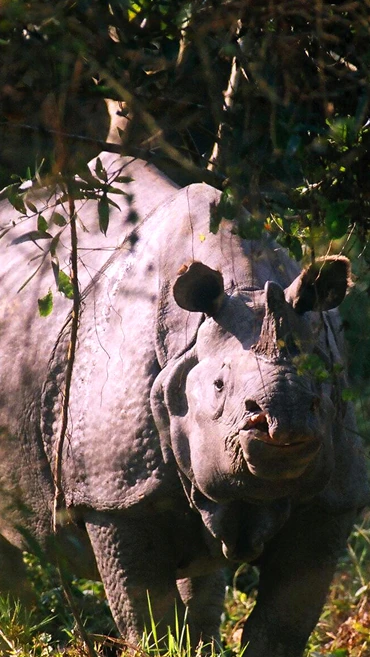Bhutanghat: The Forest Whispers Across Borders
Bhutanghat is an enchanting yet very remote forest destination on the western edge of the Buxa Tiger Reserve. Bhutanghat is raw, remote, and beautiful. For the traveller who prefers winding forest paths over flashy hotels and chirping hornbills over buzzing crowds, Bhutanghat offers an unforgettable brush with the wild. Situated in Alipurduar district, this hidden jewel lies on the banks of the River Raidak, right where the Indian and Bhutanese forest lines blur into one another.
Getting There
Reaching Bhutanghat is part of the adventure. The closest major town is Alipurduar, around 45 kilometres away. If you’re coming by train, New Alipurduar or Alipurduar Junction are the nearest stations. From there, you’ll need a vehicle, preferably a sturdy one, as the final stretch winds through forest roads and gravel paths. It’s about a two-hour drive through dense sal forests, sleepy tea gardens, and occasional elephant crossings—yes, the real kind.
A Forest Full of Stories and Surprises
Bhutanghat sits within the Buxa Tiger Reserve, a vast protected forest that stretches to Assam and Bhutan. While tigers are elusive here, the forest is alive with other majestic residents. Elephants often pass silently through the riverbanks, gaurs graze by the roadside, and if you are lucky and quiet enough, you might catch a glimpse of a clouded leopard or a hornbill darting through the treetops.
The main attraction here is nature in its purest form. The Raidak River, calm yet powerful, cuts through boulders and thick forested banks. Birdsong fills the mornings, and the evenings turn golden as the sun sets behind Bhutan’s hills. For wildlife lovers, the area is a birdwatcher’s paradise—hill mynas, fishing eagles, and crested serpent eagles are common sights.
Bhutanghat also offers fascinating views of the Bhutan hills. A short trek up from the riverbanks gives you a panoramic view where the forest transitions seamlessly across international borders.
What to Do in Bhutanghat: Go Slow, Go Wild
This is not a destination for hurrying. You don’t visit Bhutanghat with a checklist—you come here to breathe. Still, there are enough gentle adventures to keep the explorer in you delighted.
Start your day with a walk along the Raidak. The river trail offers an almost meditative experience, with only bird calls and the rustle of bamboo leaves for company. Early mornings or late evenings often bring herds of elephants near the water—always keep a respectful distance and listen to your local guide.
You can also visit the Buxa Fort, about 20 kilometres away. This historic fort, once a detention camp during British rule, is now a trekking hotspot. The trail is rich in flora and passes through small hamlets like Santalabari.
For culture seekers, nearby forest villages inhabited by indigenous communities offer an authentic peek into tribal lifestyles. With prior arrangements, you can share a meal, watch a dance performance, or simply enjoy a cup of steaming tea with the locals.
Nearby Places Worth Exploring
Bhutanghat is well placed for travellers looking to explore more of the Dooars’ magic. Jayanti, another tranquil forest settlement on the Jayanti River, is only about 25 kilometres away. Known as the Queen of Dooars, Jayanti is famous for its moonlit riverside and the Mahakal Cave trek.
Buxa Tiger Reserve’s core zone, accessible via Santalabari, is a 20-kilometre drive from Bhutanghat. Trekking routes from here lead to Lepchakha, a Bhutanese village with spectacular panoramic views. Cooch Behar, with its royal palace and heritage temples, is about 90 kilometres away and can be a worthwhile detour.
Alipurduar town itself, at a distance of 45 kilometres, provides the nearest facilities, including ATMs, pharmacies, and a railway booking office.
When to Visit Bhutanghat
Bhutanghat welcomes travellers round the year, but the experience changes with the seasons. Winter, from November to February, is the best time for clear skies, cool evenings, and easier wildlife spotting. It is also when safaris and treks are most enjoyable.
The monsoon months (June to September) drench the forest in a thousand shades of green, making it lush and magical, though landslides and forest restrictions can affect accessibility. Post-monsoon, from October to early November, is particularly beautiful, with streams gushing, flowers blooming, and forest creatures active.
Summer (March to May) is warmer but still quite tolerable, especially with the cool breeze from the river. Just remember that the forest gates may close from mid-June due to the monsoon, so check ahead before planning.
To explore Bhutanghat and plan a memorable Dooars experience with stay, transport, and guided excursions, contact NBTT Travel Solution Pvt. Ltd. at 9733300696. Let the border forests call you home.
- Alipurduar
- Banarhat
- Bagrakote
- Barodabri
- Batabari
- Bindu Dooars
- Binnaguri
- Bodaganj
- Buxa National Park
- Chalsa
- Chamurchi
- Chapramari
- Chilapata
- Coochbehar
- Damdim
- Dhupguri
- Falakata
- Garochira
- Hasimara
- Gorumara National Park
- Gajoldoba
- Jalpaiguri
- Jatileshwar Temple
- Jaigaon
- Jaldapara
- Jaldhaka
- Jalpesh Temple
- Jayanti Dooars
- Jhalong
- Kalipur Eco Village
- Kathambari Forest
- Khuttimari Forests
- Lataguri
- Lepchakha
- Mongpong
- Madarihat
- Murti
- Malbazar
- Oodlabari
- Raimatang
- Rajabhatkhawa
- Ramsai
- Rasikbil
- Rocky Island
- Samsing
For Booking or Query
Contact Us
Query Form
North-Bengal.com
Siliguri Office - 19 MN Sarkar Road, Siliguri, West Bengal - 734001 Siliguri, State : West Bengal, Country : India. PIN : 734001
info@north-bengal.com


